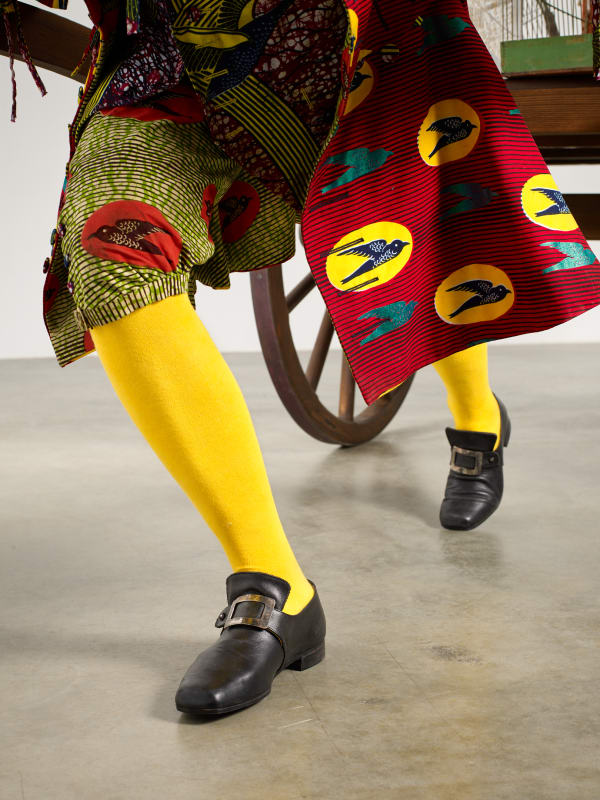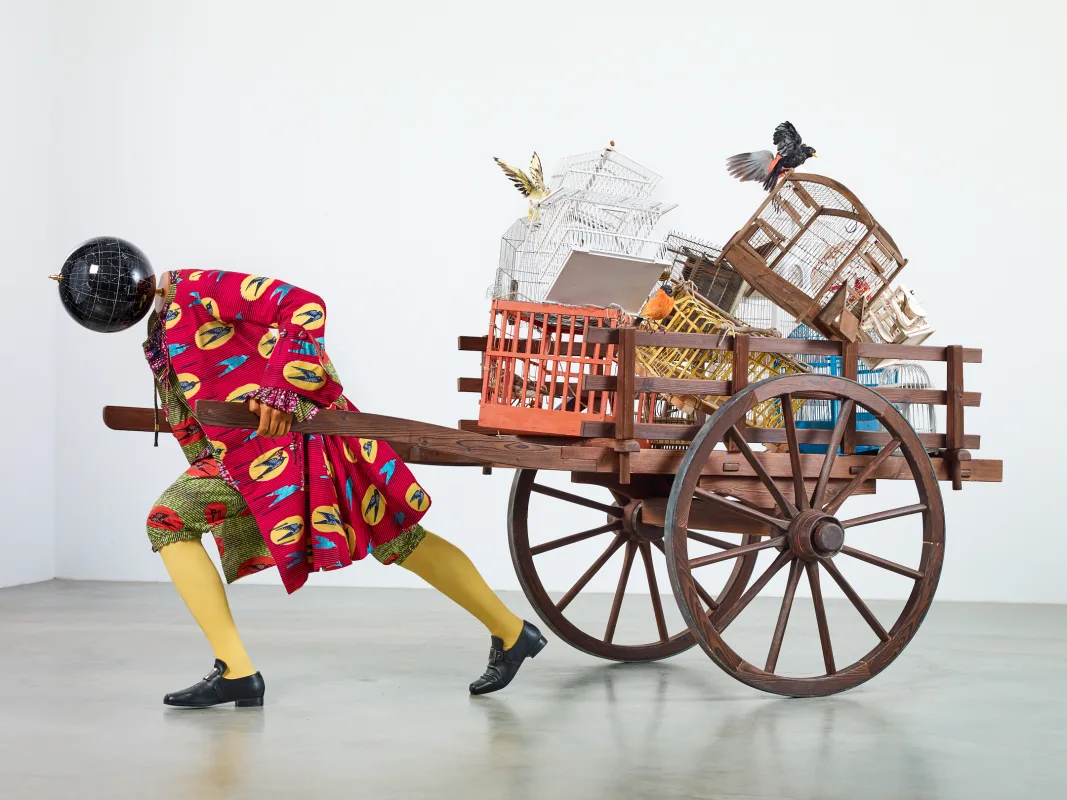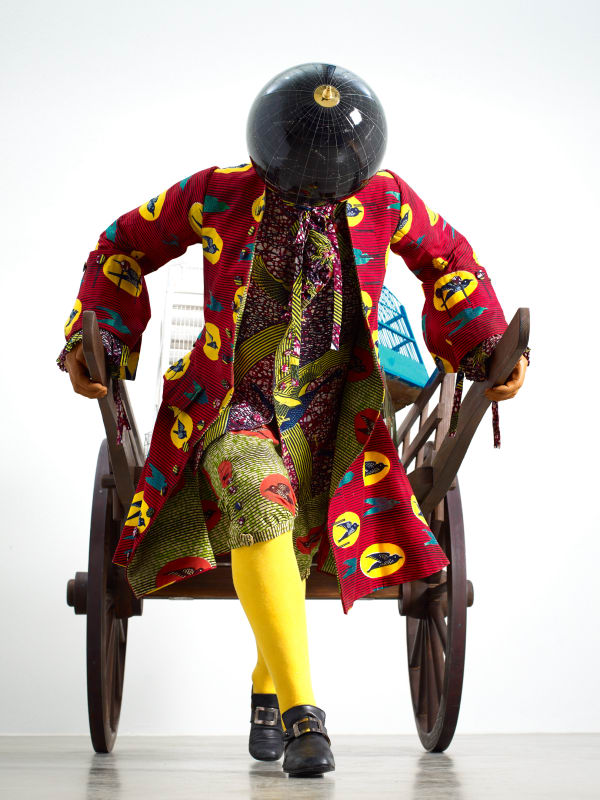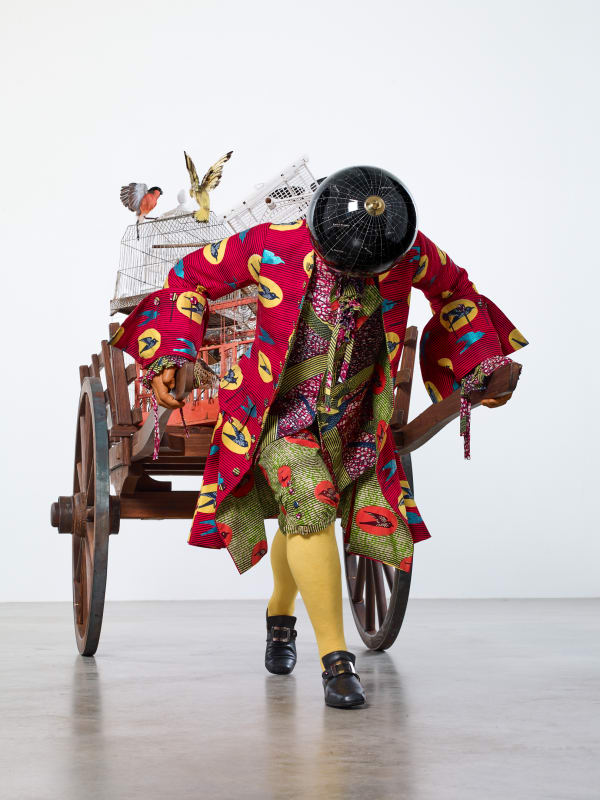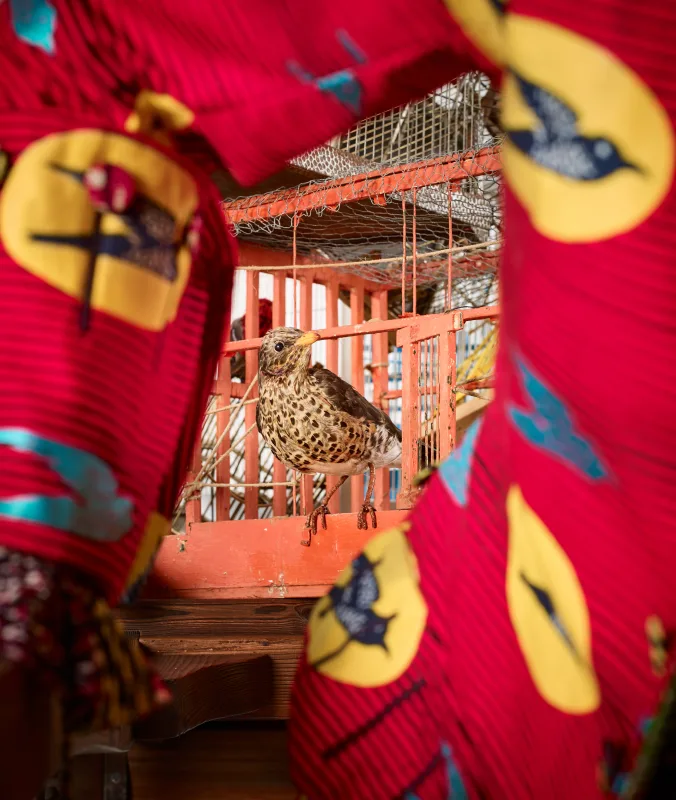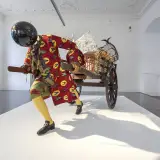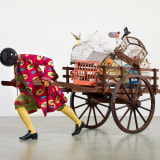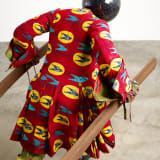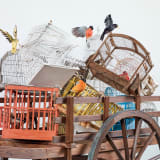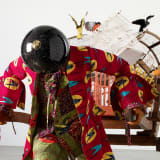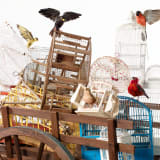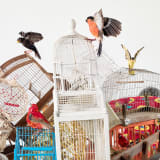Yinka Shonibare CBE, 'The Bird Catcher's Dilemma'
Yinka Shonibare CBE’s ‘The Bird Catcher’s Dilemma’ is inspired by the story of Papageno, the bird catcher, in Mozart’s opera 'The Magic Flute'. This sculpture was commissioned for Salzburg Museum to coincide with the 100th anniversary of the Salzburg Festival of music and drama as part of the group exhibition 'Great World Theatre - 100 Years of the Salzburg Festival'.
Papageno’s tale is one of darkness, light and finding your way in the world. In ‘The Magic Flute’, he becomes a playful metaphor for the freedom and preservation of nature at a time when the protection of nature and the environment are most urgent. Shonibare’s sculpture presents Papageno performing the impossible task of trapping nature, as all of his birds are escaping from their cages. In the 1700s, the time of Mozart, small birds played an important symbolic role in courtship ritual: the gift of a caged bird from a man to a woman signified her capture of his heart. Shonibare also explores ideas of colonialism and post-colonialism in this work. In this way, the bird catcher can be viewed as the coloniser on a failed civilising mission, whilst the fleeing birds symbolise the colonies that have broken free and become independent, despite attempts to shackle them.
Fascinated by geographical and cultural identity, Shonibare fuses different references in this sculpture. The bird catcher’s costume is modelled on the dress codes of 18th century Austria and has been refashioned from Dutch wax batik fabric. A hallmark of Shonibare’s practice, the brightly coloured patterned batik fabric is a symbol of African identity. Designed in Indonesia, these fabrics are produced in the Netherlands and sold in West Africa. Many of these patterns are rich in symbolic meaning that allows them to be ‘read’ in some cultures.
The hay cart that the bird catcher pulls and the cages stacked inside it are based on those used during the era of Mozart in 18th century Austria. Escaping from the cages is a selection of songbird native to Austria. Shonibare modelled these on birds used in previous productions of ‘The Magic Flute’. A globe replaces the figure’s head, depicting an astrological map but with the names of these song birds replacing the names of the constellations.



